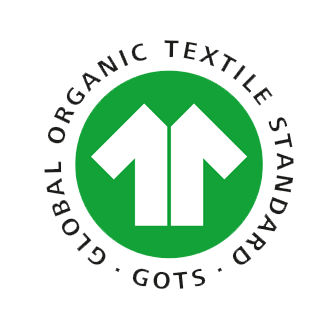The majority of the clothes Americans purchase today are made overseas. However, there are signs that the tide may be shifting. The U.S. clothing manufacturing industry, once a dominant force, has seen a significant decline in domestic production1 over the years. Understanding where most of the clothes sold in the U.S. are made, and the potential for U.S. manufacturers to rebound, offers valuable insights into the future of the industry.
While the U.S. still relies heavily on imports, growing interest in "Made in USA" products and shifting economic factors are creating new opportunities for domestic manufacturers.
This article explores where U.S. clothing is made, the impact of globalization, and the potential for a resurgence in domestic production.
What Percentage of Clothing in the U.S. Is Made Domestically?
Although the U.S. clothing market is predominantly supplied by overseas manufacturers, there is a small but significant portion of clothing made domestically. Let’s explore how much clothing in the U.S. is made within its borders.
The U.S. clothing manufacturing industry has drastically declined over the years, but certain segments of the market are still manufactured domestically.
 Fashion designer reviewing designs in the studio.
Fashion designer reviewing designs in the studio.
The current state of domestic clothing production:
| Category | Percentage of U.S. Clothing Made Domestically | Key Reasons for Domestic Production |
|---|---|---|
| Overall U.S. Clothing | 2-3% | Specializing in high-end, niche products, or quick turnaround times. |
| Textile Production | 5-6% | U.S. manufacturers focusing on high-quality fabrics. |
| Specialty Apparel (Denim, Outdoor Gear) | 10-20% | Demand for premium, long-lasting products. |
How Much Clothing Is Produced by United States Clothing Manufacturers?
The percentage of clothing manufactured domestically in the U.S. is relatively small, around 2-3% of the total clothing market.
While domestic manufacturing accounts for a small portion, niche markets such as premium denim2, activewear, and sustainably produced garments are seeing growth in the U.S.

How Has the U.S. Clothing Manufacturing Industry Changed Over Time?
Historically, the U.S. was a major player in the clothing manufacturing sector, but over time, this has shifted dramatically.
The industry has gone through significant changes, primarily due to the shift of production overseas where labor costs were cheaper.
| Decade | Domestic Manufacturing Share | Key Changes to the Industry |
|---|---|---|
| 1950s-1970s | 90%+ of U.S. clothing produced domestically | The U.S. was the largest global producer of textiles and garments. |
| 1980s-1990s | 60-70% of U.S. clothing produced domestically | Offshoring production to countries with lower labor costs began. |
| 2000s-Present | 2-3% of U.S. clothing produced domestically | Globalization, free trade agreements, and cheaper labor overseas led to a massive decline in domestic production. |
Where Are the Majority of U.S. Clothing Imports Coming From?
While U.S. clothing manufacturers have declined in number, imports from other countries have surged. Understanding where the majority of clothing sold in the U.S. comes from reveals the global nature of the clothing supply chain.
Countries like China, Vietnam, and Bangladesh dominate the U.S. clothing import market, driving the global supply chain that U.S. retailers rely on.
Key countries supplying clothing to the U.S.:
| Country | Share of U.S. Clothing Imports | Key Products Manufactured |
|---|---|---|
| China | 23% | Basic clothing, fast fashion, accessories |
| Vietnam | 15% | Activewear, casual wear, denim |
| Bangladesh | 6% | Ready-to-wear, budget clothing, textiles |
Which Countries Are the Top Suppliers of Clothing to the U.S.?
The U.S. imports clothing from various countries, but the top suppliers have remained consistent over the years.
China continues to be the largest supplier, though countries like Vietnam and Bangladesh are rapidly increasing their market share.
| Country | Share of U.S. Clothing Imports | Key Characteristics |
|---|---|---|
| China | 23% | Low labor costs, vast manufacturing capacity |
| Vietnam | 15% | Cost-effective production, skilled workforce |
| Bangladesh | 6% | Extremely low labor costs, specialized in ready-to-wear |
How Has Globalization Impacted U.S. Clothing Manufacturing and Imports?
Globalization has made it easier for U.S. companies to access affordable clothing from overseas, shifting the focus away from domestic production1.
The U.S. now imports most of its clothing due to lower production costs in other countries, but there are signs of a shift as consumer demand for sustainability and local production grows.
| Globalization Impact | Description | Effect on U.S. Manufacturing and Imports |
|---|---|---|
| Lower Costs | Overseas manufacturers offer cheaper labor and material costs | Leads to more imports and less domestic production1. |
| Trade Agreements | Free trade agreements reduced tariffs on imports | Increased the flow of inexpensive clothing to the U.S. |
| Global Supply Chains | Production in countries like China, India, and Bangladesh has become highly efficient | Encourages U.S. brands to move production overseas for cost-effectiveness. |
What Are the Benefits of Manufacturing Clothing in the United States?
Despite the advantages of offshore production, there are several benefits to manufacturing clothing domestically in the U.S. Companies and consumers alike stand to gain from shorter production times, reduced shipping costs, and ethical production standards.
U.S.-made clothing offers several advantages, from faster turnaround times to improved quality control.
Key benefits of U.S. clothing manufacturing:
| Benefit | Description | Why It Matters |
|---|---|---|
| Reduced Lead Times | Domestic manufacturers can produce and ship goods more quickly | Helps brands keep up with rapidly changing fashion trends and seasonal demands. |
| Lower Shipping Costs | Domestic production cuts down on expensive international shipping | Reduces overall costs and improves profit margins. |
| Support for Local Economies | Domestic production creates jobs and stimulates local economies | Contributes to job growth and economic development in U.S. communities. |
How Does Domestic Production Impact Lead Times and Shipping Costs?
Manufacturing clothing in the U.S. significantly reduces lead times and shipping costs.
By producing clothing locally, brands can more quickly respond to market demands, reducing delays in product availability and improving overall efficiency.
| Impact | Description | Why It’s Critical |
|---|---|---|
| Faster Turnaround | Local production allows for faster production and shipping | Helps meet demand for quick-turnaround fashion items. |
| Lower Costs | Reduces the need for costly international shipping fees | More cost-effective for U.S.-based retailers. |
What Are the Economic and Job-Related Benefits of U.S. Clothing Manufacturing?
Domestic clothing manufacturing provides significant economic benefits, including job creation and increased economic activity.
By investing in U.S.-based production, companies contribute to the local economy by providing stable jobs and boosting consumer spending.
| Economic Benefit | Description | Why It’s Important |
|---|---|---|
| Job Creation | U.S. clothing manufacturers provide jobs in areas like design, production, and logistics | Provides stable, well-paying jobs in local economies. |
| Economic Growth | Investing in U.S.-based manufacturing stimulates the economy and reduces trade deficits | Strengthens the U.S. economy and reduces reliance on imports. |
Why Do Many Clothing Brands Choose to Manufacture Overseas?
Despite the benefits of domestic manufacturing, many clothing brands continue to source their products from overseas. The primary reason for this is cost—labor and production are significantly cheaper in countries like China, Vietnam, and Bangladesh.
While overseas production offers significant savings, it comes with challenges such as longer lead times and less control over production quality.
Factors influencing the decision to manufacture overseas:
| Factor | Description | Impact on U.S. Manufacturing |
|---|---|---|
| Lower Labor Costs | Overseas labor costs are much cheaper than in the U.S. | Allows for cheaper production, higher profit margins. |
| Larger Scale Production | Overseas manufacturers can handle large-scale orders efficiently | Makes mass production and high-volume orders easier. |
| Global Supply Chain | Established supply chains in countries like China and Bangladesh | Enables quick sourcing of materials and large quantities of goods. |
How Do Lower Production Costs in Countries Like China and Bangladesh Affect U.S. Manufacturing?
Lower production costs3 in countries like China and Bangladesh have made it difficult for U.S. manufacturers to compete, as the cost of domestic labor is much higher.
While U.S. manufacturers struggle with higher labor costs, they focus on quality, sustainability, and quicker lead times to compete in the market.
| Cost Factor | Impact on U.S. Manufacturing | How to Compete |
|---|---|---|
| Labor Costs | U.S. manufacturers face higher labor costs than overseas producers | Focus on high-quality, niche products and local sourcing to justify higher prices. |
| Material Costs | Overseas manufacturers have cheaper raw material costs | U.S. manufacturers may need to source materials locally or focus on innovation to stay competitive. |
How Does the Shift in Consumer Expectations Influence Clothing Manufacturing?
Consumers are increasingly concerned with sustainability, ethical practices, and the environmental impact of the clothing industry.
As demand for ethically produced clothing grows, U.S. manufacturers are adapting by emphasizing transparency, quality, and environmental responsibility.
| Consumer Expectation | Impact on U.S. Manufacturing | Benefits for U.S. Manufacturers |
|---|---|---|
| Sustainability | U.S. manufacturers are adopting eco-friendly practices | Attracts environmentally conscious consumers and reduces waste. |
| Ethical Practices | U.S. manufacturers often comply with stricter labor laws | Builds consumer trust and brand loyalty. |

Is There a Trend Toward Reviving U.S. Clothing Manufacturing?
There is growing interest in reviving U.S. clothing manufacturing, driven by changing consumer preferences, new technologies, and a focus on sustainability.
This trend, known as "reshoring4" or "nearshoring," is fueled by the desire for quicker lead times, ethical production, and reduced environmental impacts.
Key factors driving the trend toward domestic production:
| Factor | Description | Why It’s Important |
|---|---|---|
| Consumer Demand | Growing interest in locally made, sustainable clothing | Consumers are willing to pay a premium for high-quality, ethically produced garments. |
| Technological Innovation | Advancements in automation and textile production are reducing costs | U.S. manufacturers can remain competitive by embracing new technologies. |
| Reshoring Initiatives | Government incentives and subsidies for U.S. manufacturers to return production to the U.S. | Reduces reliance on overseas suppliers and helps revitalize local industries. |
Are U.S. Manufacturers Adapting to Meet the Demand for “Made in USA” Products?
Yes, U.S. manufacturers are increasingly adapting to meet the growing demand for "Made in USA" products.
By embracing new manufacturing technologies, sustainability practices, and local sourcing, U.S. manufacturers are positioning themselves to compete in a changing market.
What Innovations Are Helping United States Clothing Manufacturers Compete Globally?
Innovations such as automation, sustainable production techniques, and supply chain transparency5 are helping U.S. manufacturers compete with low-cost overseas producers.
Technological advancements allow for faster production times, reduced costs, and improved product quality, helping U.S. manufacturers remain competitive in a globalized market.
Conclusion
While U.S. clothing manufacturing has seen significant decline due to lower labor costs abroad, there are signs of a resurgence driven by consumer demand for ethically produced, locally sourced products. By embracing innovation, sustainability, and niche markets, U.S. manufacturers can compete with overseas production and contribute to the growth of the domestic clothing industry.
-
Understand the significance of domestic production in the U.S. clothing market. ↩ ↩ ↩
-
Learn about the growth and demand for premium denim products in the U.S. ↩
-
Learn about the various factors that affect production costs in the industry. ↩
-
Learn about the trend of bringing manufacturing back to the U.S. and its implications. ↩
-
Explore the importance of transparency in the clothing supply chain. ↩









